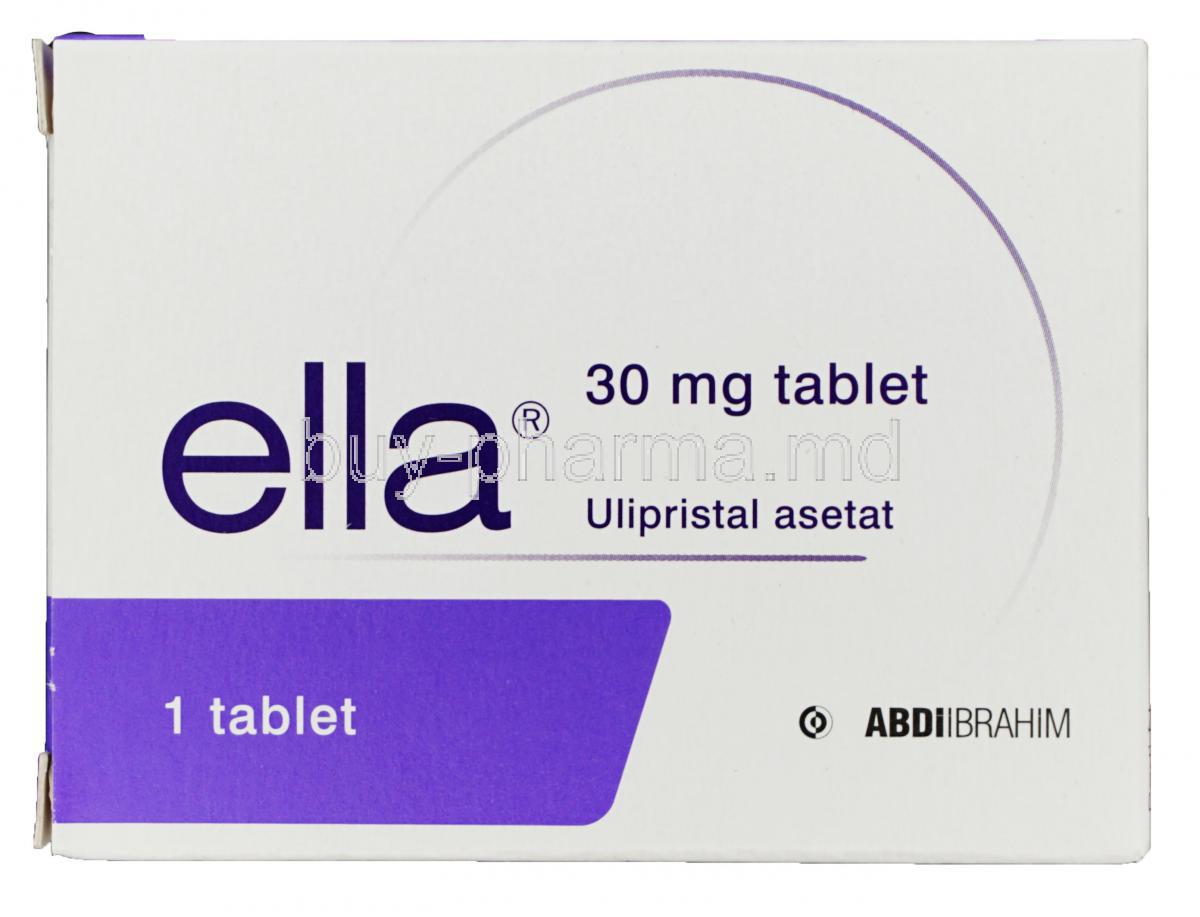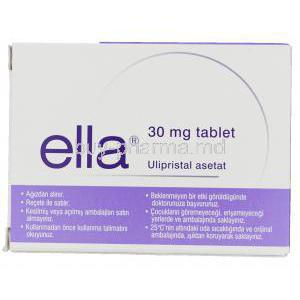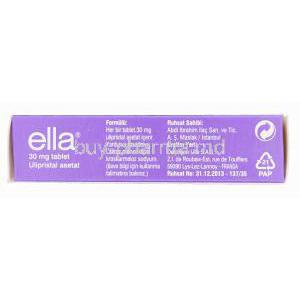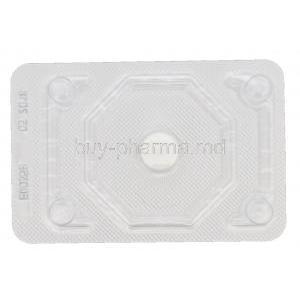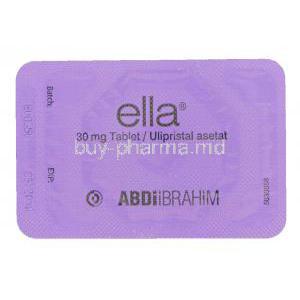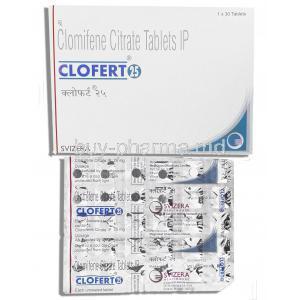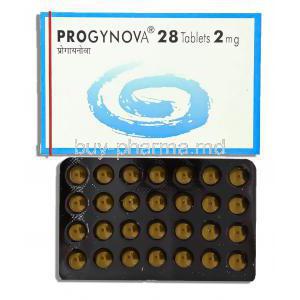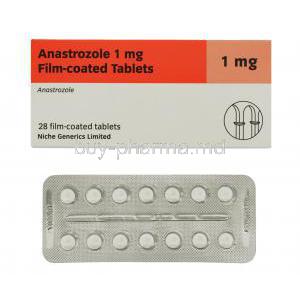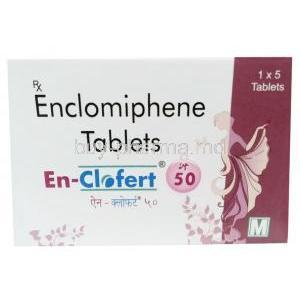Introduction to Ella (Ulipristal Acetate)
Overview of Ella and Its Purpose as an Emergency Contraceptive
Ella is a prescription-only emergency contraceptive designed to prevent pregnancy after unprotected intercourse or contraceptive failure. It contains ulipristal acetate, a selective progesterone receptor modulator (SPRM), which delays ovulation to inhibit fertilization. This single-dose oral tablet provides a critical option for women seeking postcoital contraceptive protection.
Regulatory Approval Status (FDA, EMA)
Ella received approval from the U.S. Food and Drug Administration (FDA) in 2010 and is authorized by the European Medicines Agency (EMA) under the name ellaOne. Its safety and efficacy have been validated through extensive clinical trials across multiple populations.
Historical Background and Manufacturer Information
Initially developed by HRA Pharma, a French pharmaceutical company specializing in reproductive health, Ella has become a globally recognized emergency contraceptive. It marked a significant advancement by extending the effective window to five days post-intercourse, surpassing prior options.
Comparison with Other Emergency Contraceptives (Levonorgestrel, Copper IUD)
- **Ella (Ulipristal Acetate):** Effective up to 120 hours; prescription required. - **Levonorgestrel (Plan B One-Step):** Effective up to 72 hours; available OTC. - **Copper IUD:** Most effective method; must be inserted by a clinician within 5 days. Ella demonstrates superior efficacy compared to levonorgestrel, especially between 72–120 hours, and provides a hormonal alternative for women not opting for an IUD.
Composition and Formulation of Ella
Active Ingredient: Ulipristal Acetate 30 mg
Each Ella tablet contains 30 mg of ulipristal acetate, the pharmacologically active compound responsible for delaying ovulation and inhibiting conception.
Inactive Ingredients and Excipients
Inactive components may include: - Lactose monohydrate - Povidone K30 - Magnesium stearate - Sodium starch glycolate These ingredients ensure the stability, solubility, and absorption of the active drug.
Pharmaceutical Form: Oral Tablet
Ella is available as a film-coated oral tablet, round and white to off-white in appearance. It is designed for single-dose administration.
Packaging and Dosage Unit Details
Packaged in a single-dose blister pack for individual use, each unit includes clear labeling and instructions. The product should remain sealed until use to preserve efficacy.
Medical and Approved Uses of Ella
Primary Indication: Emergency Contraception Within 120 Hours
Ella is indicated for the prevention of pregnancy when taken within 120 hours (5 days) of unprotected sexual intercourse. It is not intended for routine contraceptive use.
Efficacy Window and Comparison with Other Morning-After Pills
Ella retains near-constant efficacy across the five-day window, unlike levonorgestrel, which decreases in effectiveness over time. Clinical studies indicate Ella prevents more pregnancies when used later in the time window.
Use in Cases of Contraceptive Failure
Ella is suitable for emergency use in the following situations: - Condom breakage or slippage - Missed oral contraceptive pills - Miscalculated fertility awareness method - Unplanned or non-consensual intercourse
Off-Label Uses of Ulipristal Acetate
Management of Uterine Fibroids (in Other Formulations)
In some regions, ulipristal acetate is marketed under different brand names for short-term treatment of moderate to severe symptoms of uterine fibroids in premenopausal women.
Potential Use in Endometriosis-Related Symptoms
Preliminary research explores ulipristal acetate’s modulatory effects on progesterone pathways in endometrial tissue, potentially alleviating pain and lesion proliferation.
Investigational Uses in Menstrual Regulation or Fertility Preservation
Experimental studies have investigated ulipristal acetate for use in controlling abnormal uterine bleeding and preserving ovarian reserve in women undergoing reproductive treatment.
How Ella Works: Mechanism of Action
Selective Progesterone Receptor Modulator (SPRM) Activity
Ella functions by binding to progesterone receptors and modulating their activity, preventing the hormone from initiating ovulation and endometrial changes.
Inhibition or Delay of Ovulation
The principal mechanism involves delaying or inhibiting the rupture of the dominant follicle. This interruption halts the release of the oocyte, preventing fertilization.
Effects on Endometrial Receptivity
Secondary mechanisms may include altering endometrial receptivity, potentially affecting implantation. However, it does not disrupt an existing pregnancy.
Distinction from Abortifacients and Hormonal Contraceptives
Ella is not an abortifacient and does not terminate an established pregnancy. Unlike daily hormonal contraceptives, it is used only in emergencies, without a cumulative hormonal effect.
Dosage and Administration Guidelines
Recommended Dosage for Emergency Contraception
The standard dosage is one 30 mg tablet taken orally as soon as possible within 120 hours of unprotected intercourse.
Timing and Effectiveness Related to Intercourse
Effectiveness is highest when taken promptly. Delay in administration may reduce efficacy, especially if ovulation is imminent.
Instructions If Vomiting Occurs Post-Dose
If vomiting occurs within 3 hours of taking Ella, a second dose should be administered. Medical guidance is advised in such cases.
Repeat Usage Within the Same Menstrual Cycle
Although not contraindicated, repeated use within the same cycle is not recommended due to hormonal disruption and lack of data on safety.
Common Side Effects of Ella
Gastrointestinal Symptoms: Nausea, Abdominal Pain
Mild gastrointestinal disturbances are the most commonly reported side effects. These are typically self-limiting and require no intervention.
Headache, Dizziness, and Fatigue
Central nervous system-related effects such as headaches or fatigue may occur but are generally transient.
Menstrual Changes: Delayed or Earlier Period
Changes in cycle timing, duration, or intensity are possible following Ella administration. Most women resume normal menstruation within one week of expected onset.
Breast Tenderness or Mood Changes
Hormonal fluctuations may trigger mild breast discomfort or mood variations in some individuals.
Serious and Rare Adverse Reactions
Hypersensitivity Reactions or Skin Rashes
Allergic responses are rare but may include rash, urticaria, or anaphylaxis in extremely sensitive individuals.
Severe Abdominal Pain Indicating Ectopic Pregnancy
Persistent or intense abdominal pain after use warrants evaluation for ectopic pregnancy, particularly in women with a history of tubal disorders.
Liver Enzyme Alterations (Rare)
Elevations in liver enzymes have been observed infrequently, typically in patients using higher-dose ulipristal acetate for other indications.
Long-Term Safety Concerns With Repeated Use
Repeated use over multiple cycles has not been thoroughly evaluated. There is currently insufficient data to determine long-term safety with chronic exposure.
Drug Interactions and Compatibility
Interactions With CYP3A4 Inducers
Ella's efficacy is reduced when co-administered with CYP3A4 inducers such as: - Rifampin - Phenytoin - Carbamazepine - St. John’s Wort
Effects of Enzyme Inhibitors
CYP3A4 inhibitors (e.g., ketoconazole) may increase ulipristal exposure, though clinical significance for a single dose is minimal.
Reduced Effectiveness With Hormonal Contraceptives
Concurrent use with hormonal contraceptives may diminish Ella’s effectiveness. It is advised to delay hormonal contraceptive use for at least 5 days post-dose.
Guidance on Timing of Resuming Regular Birth Control
Following Ella administration, non-hormonal backup contraception (e.g., condoms) should be used until the next menstrual cycle or until hormonal contraception is resumed after 5 days.
Warnings and Precautions for Safe Use
Importance of Pregnancy Testing Before and After Use if Menstruation is Delayed
Before administering Ella, it is advisable to rule out an existing pregnancy. While ulipristal acetate is not intended to harm an established pregnancy, its use in that context is contraindicated. If menstruation is delayed by more than seven days, or is unusually light or heavy, a pregnancy test is essential to confirm treatment success.
Risk of Ectopic Pregnancy
Emergency contraceptives do not guarantee the prevention of all pregnancies. In rare cases where pregnancy does occur, there is a slightly increased risk of it being ectopic. Severe abdominal pain or unusual bleeding should prompt immediate medical evaluation to exclude tubal implantation.
Use in Women with Severe Asthma on Glucocorticoids
Ella may interfere with the efficacy of systemic corticosteroids. Patients with severe asthma controlled by oral glucocorticoids should consult a physician before use due to possible antagonism of corticosteroid activity.
Not Intended for Regular Contraception
Ella is not a replacement for routine birth control. Its pharmacodynamics are designed for occasional, emergency use only. Frequent use may cause hormonal disruption and reduced efficacy over time.
Contraindications for Ella Use
Known or Suspected Pregnancy
Ella should not be used if pregnancy is confirmed or suspected. It is ineffective once implantation has occurred and may expose the fetus to unneeded pharmaceutical agents.
Hypersensitivity to Ulipristal Acetate or Any Tablet Component
Individuals with a known allergy to ulipristal acetate or excipients such as lactose, povidone, or magnesium stearate must avoid this medication. Hypersensitivity reactions may include rash, swelling, or anaphylaxis.
Severe Hepatic Impairment
Ella is contraindicated in women with severe liver dysfunction. Ulipristal acetate is metabolized hepatically, and compromised liver function could lead to drug accumulation and toxicity.
Careful Administration in Special Situations
Repeated Use Within One Menstrual Cycle
While not strictly contraindicated, multiple uses of Ella in the same cycle are discouraged. Repeated administration may lead to hormonal imbalance and unpredictable menstrual changes.
Limited Data in Women With BMI Over 30 kg/m²
Some evidence suggests reduced efficacy in women with higher body mass indices. Although not an absolute contraindication, clinicians should be aware of the diminished reliability and discuss alternatives like copper IUDs.
Use in Cases of Unconfirmed Pregnancy Status
If pregnancy status is unknown and cannot be reasonably ruled out, caution is advised. Administration in early undetected pregnancy does not constitute an abortion but should still be avoided.
Important Precautions Before and After Use
Need for Backup Contraception After Taking Ella
Ella may interfere with ongoing hormonal contraception. Non-hormonal backup methods such as condoms should be used for at least 5 days post-intake. Resumption of hormonal birth control should occur only after this window.
Monitoring Menstrual Cycle Changes
Patients should monitor the timing and characteristics of their next menstrual cycle. Any delay exceeding one week or irregularity beyond one cycle requires further assessment.
Follow-up Medical Consultation for Prolonged Delays or Abnormal Bleeding
Unexplained bleeding, cycle irregularities, or pelvic discomfort persisting after Ella use warrants a clinical evaluation to rule out complications such as pregnancy or hormonal disturbances.
Avoiding Unprotected Intercourse Post-Administration
After taking Ella, unprotected sex within the same cycle can result in pregnancy. Ovulation may still occur later than usual; thus, barrier contraception is essential for continued protection.
Use in Elderly Patients
Not Indicated in Postmenopausal Women
Ella has no clinical utility in postmenopausal women as it targets ovulation, a process that no longer occurs in this demographic.
Lack of Data in Women Aged 65 Years and Older
There is insufficient clinical data regarding the safety and effectiveness of Ella in women over 65. Therefore, it is not recommended for this age group.
Use in Pregnant and Breastfeeding Women
Contraindicated During Pregnancy
Ella must not be used during pregnancy. It is ineffective post-implantation and may pose unnecessary exposure to the fetus.
Lack of Evidence for Fetal Harm if Inadvertently Used
Limited data do not suggest teratogenic effects from accidental use during early pregnancy. However, follow-up is recommended to monitor fetal development.
Excretion in Breast Milk and Recommendations to Avoid Breastfeeding
Ulipristal acetate is excreted in human milk. Breastfeeding should be avoided for at least 7 days post-administration to minimize neonatal exposure. Expressed milk during this period should be discarded.
Use in Pediatric Populations
Approved for Use in Postmenarchal Adolescents
Ella is approved for use in adolescents who have started menstruating. Dosing is the same as in adults.
Safety and Efficacy Data in Minors
Clinical trials support its safety and efficacy in postmenarchal adolescents. However, use in this population should include counseling on sexual health and contraceptive education.
Not Intended for Prepubescent Children
Ella is not appropriate for use in children who have not reached puberty. It has no pharmacologic role before the onset of ovulation.
Overdose and Emergency Management
Signs and Symptoms of Overdose
Overdose is uncommon due to single-tablet packaging. Potential symptoms may include nausea, vomiting, or hormonal disturbances.
No Specific Antidote Available
There is no known antidote for ulipristal acetate. Management is symptomatic and supportive.
Supportive Treatment Guidelines
In cases of overdose, observation and symptomatic relief are generally sufficient. Activated charcoal may be considered shortly after ingestion in some settings.
Handling and Storage Recommendations
Storage Conditions: Temperature, Humidity, and Light Exposure
Store Ella below 25°C (77°F) in a dry environment, away from direct sunlight and moisture. Do not refrigerate or freeze.
Shelf Life and Expiry Monitoring
Always check the expiration date before use. Expired medication should not be consumed as efficacy cannot be guaranteed.
Safe Disposal of Expired or Unused Tablets
Dispose of unused or expired tablets through pharmaceutical take-back programs or according to local waste disposal regulations. Do not flush into wastewater.
Handling Precautions for Patients and Providers
Counseling on Correct and Timely Usage
Pharmacists and clinicians should educate patients on the time-sensitive nature of Ella and its mechanism. Clear instructions should be provided at the point of care.
Avoid Crushing or Splitting the Tablet
Ella should be taken whole with water. Altering the form of the tablet may affect its bioavailability and efficacy.
Patient Education Materials and Informed Consent (for Minors in Certain Regions)
In regions requiring parental or guardian consent for minors, appropriate education and counseling must be conducted. Printed information should accompany each prescription to promote informed decision-making.

